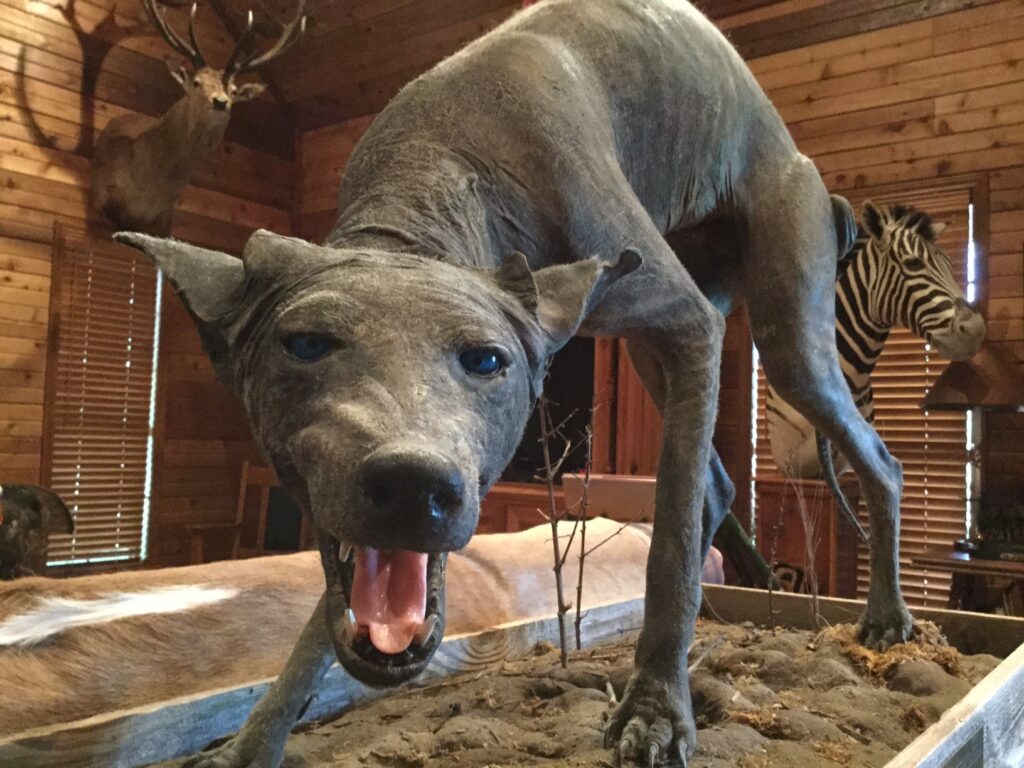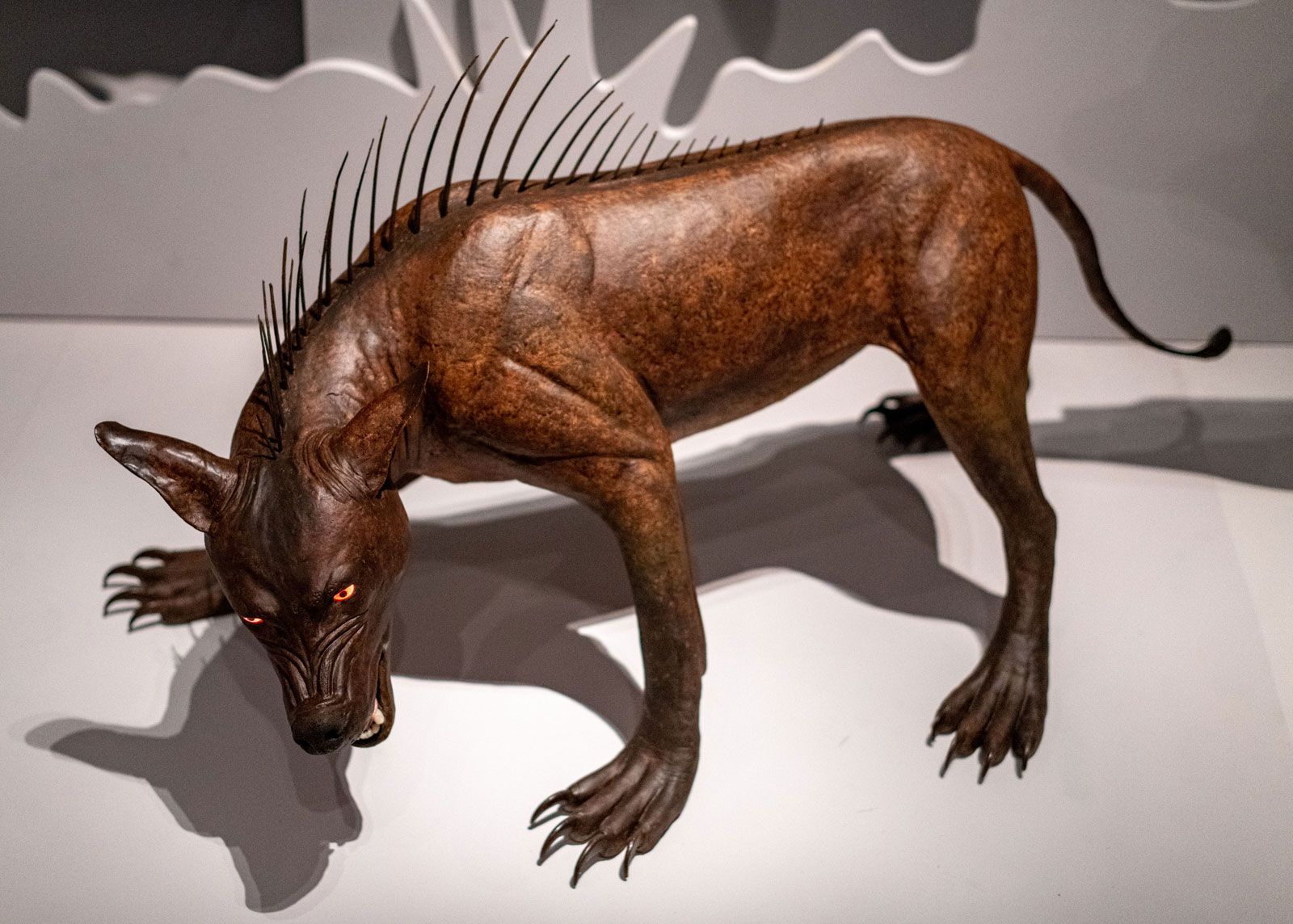Once upon a time in the vast plains of Texas, a terrifying legend was born – the legend of the Chupacabra. This mythical creature, often shrouded in mystery, has captured the imaginations of locals and skeptics alike. Described as a blood-sucking beast with leathery wings and glowing red eyes, the Chupacabra has long been blamed for the mysterious deaths of livestock across the Lone Star State. Join us as we explore the chilling tales and enduring fascination surrounding the infamous Chupacabra.
Origins and Cultural Background

This image is property of cdn.britannica.com.
Folklore and Myths
The Chupacabra, also known as the Goat Sucker, is a legendary creature that has been a part of folklore in various countries, particularly in Latin America. The origins of the Chupacabra can be traced back to Puerto Rico in the 1990s, where reports of a mysterious creature emerged. According to folklore, the Chupacabra is a nocturnal creature that attacks and sucks the blood of livestock, leaving behind puncture marks on the animals’ bodies. Over time, the legend of the Chupacabra spread to other parts of the Americas, captivating the imaginations of people and giving rise to numerous sightings and reports.
First Sightings and Reports
The first reported sighting of the Chupacabra occurred in Puerto Rico in 1995. Eyewitnesses claimed to have seen a strange creature resembling a reptilian kangaroo with sharp spines running down its back. The sightings quickly captured media attention, leading to a frenzy of speculation and fear among the local population. As news of the Chupacabra spread, similar reports began to emerge from other parts of the Americas, including Mexico, Central America, and even as far north as the United States. The widespread nature of the sightings fueled the belief in the existence of the Chupacabra and led to further investigations into its physical characteristics and behavior.
Physical Description and Characteristics
Appearance
The Chupacabra is described as a bipedal creature, roughly the size of a small bear or large dog. It has reptilian-like skin, often described as gray or greenish in color, with spines or quills running down its back. Eyewitness accounts vary in their descriptions, with some claiming the creature has large fangs and glowing red eyes, while others describe a more canine-like appearance. Despite the variations, there is a consistency in the reports of a creature with a menacing and otherworldly appearance.
Size and Weight
The size of the Chupacabra varies depending on the region and the specific account. Reports suggest that it can range anywhere from 3 to 6 feet in height and weigh between 40 to 90 pounds. These dimensions, coupled with its reptilian features and sharp spines, contribute to the intimidating and fearsome reputation of the Chupacabra.

This image is property of upload.wikimedia.org.
Physical Abilities
The Chupacabra is believed to possess impressive physical abilities. Witnesses claim that it is able to move swiftly and silently, disappearing into the night before it can be captured or confronted. Additionally, its reported ability to suck the blood of its prey without leaving a trace has led to speculation about supernatural or vampiric abilities. However, skeptics argue that the Chupacabra’s physical characteristics can be attributed to misidentification or exaggeration, and that no concrete evidence of its existence has been found.
Hunting Habits and Diet
Predatory Behavior
The Chupacabra is known for its alleged attacks on livestock, particularly goats and chickens. In these instances, farmers often discover their animals dead, with puncture wounds on their bodies and their blood drained. These mysterious killings have fueled the belief that the Chupacabra is a predator seeking sustenance from the blood of its victims. However, experts suggest that other factors, such as animal predation, disease, or even human activity, may be responsible for these incidents, casting doubt on the Chupacabra’s existence as a unique species.

This image is property of cbsaustin.com.
Preferred Prey
While the Chupacabra is commonly associated with attacking farm animals, there have been reports of it going after other types of prey as well. Cattle, sheep, and domestic pets like cats and dogs have been cited as victims of the creature’s alleged attacks. The Chupacabra is said to employ stealth and precision in its hunting, leaving behind minimal evidence and often baffling those who investigate the aftermath of its attacks.
Global Sightings and Reports
Incidents in the Americas
After the initial reports in Puerto Rico, the Chupacabra phenomenon quickly spread throughout the Americas. Sightings and reports came pouring in from countries such as Mexico, Brazil, Argentina, and even the United States. The widespread nature of the sightings and the consistency in the description of the creature across different regions led to increased scrutiny and interest from both believers and skeptics alike. The Chupacabra became a popular topic of conversation and captured the imagination of many, sparking debates and investigations into its existence.

This image is property of i.natgeofe.com.
Sightings Outside the Americas
While the Chupacabra is primarily associated with the Americas, there have been reports of similar creatures in other parts of the world as well. In countries like Russia, Australia, and the Philippines, stories of mysterious creatures with vampire-like characteristics have emerged, drawing parallels with the Chupacabra. These international sightings have deepened the intrigue and speculation surrounding the creature, suggesting that its influence extends beyond the borders of the Americas and into the realm of global folklore.
Controversy and Skepticism
Alternative Explanations
Despite the widespread belief in the Chupacabra, skeptics have put forth alternative explanations for the alleged sightings and attacks. They argue that the Chupacabra is likely a combination of a misidentification of known animals, including dogs and coyotes suffering from mange or other diseases, as well as the influence of mass hysteria and urban legends. The absence of concrete evidence, such as DNA samples or carcasses, further fuels skepticism and invites scientific investigation into the true nature of the creature behind the myth.

This image is property of www.texasobserver.org.
Hoaxes and Misidentifications
The Chupacabra phenomenon has also been plagued by hoaxes and misidentifications, further muddying the waters of its legitimacy. Reports of the creature often lack concrete evidence or rely heavily on anecdotal accounts, making it difficult to separate fact from fiction. Some instances of alleged Chupacabra sightings have turned out to be elaborate hoaxes perpetrated for various reasons, including media attention, personal gain, or simply pranksterism. These instances of deliberate deception have contributed to the skepticism surrounding the Chupacabra and have made it challenging to separate genuine encounters from false reports.
Pop Culture Influence
Film and TV Representations
The legend of the Chupacabra has left a lasting imprint on popular culture, particularly in the realm of film and television. Numerous movies and TV shows have been inspired by the creature, depicting it as a fearsome and relentless predator. These representations often lean into the supernatural elements of the Chupacabra, portraying it as a creature of pure evil that strikes fear into the hearts of those who encounter it. The cultural impact of these visual interpretations has further solidified the Chupacabra as an iconic figure in the folklore of the Americas.
Literature and Art
Beyond the screen, the Chupacabra has also found its place in literature and art. Countless books and short stories have been written about the creature, exploring its origins, motivations, and impact on society. Artists have captured the eerie and enigmatic nature of the Chupacabra through paintings, sculptures, and illustrations, transforming it into a visually striking symbol of mystery and intrigue. The combination of artistic interpretations and fictional narratives has added depth and richness to the Chupacabra’s cultural significance.
Urban Legends
The legend of the Chupacabra has also seeped into the realm of urban legends, captivating the imaginations of people around the world. Whether it is shared around campfires or whispered among friends, stories of the Chupacabra continue to spread, evolving and adapting to each retelling. Its status as an urban legend adds an extra layer of mystique to the creature, blurring the lines between fact and fiction and ensuring that the Chupacabra remains a topic of fascination and debate for years to come.
Scientific Investigations and Explanations
Cryptozoological Views
Cryptozoologists, who study the existence of unknown creatures, have approached the Chupacabra with both skepticism and curiosity. Some believe that there is a possibility that the Chupacabra might be a previously undiscovered species, explaining the lack of concrete evidence. Others argue that the creature is a result of misidentifications or hoaxes, emphasizing the need for scientific rigor in investigating the alleged sightings. Despite differing opinions, the Chupacabra continues to attract the attention of cryptozoologists eager to solve the mystery behind its existence.
Possible Animal Explanations
Scientists and experts from various fields have put forth plausible animal explanations for the Chupacabra phenomenon. One prominent theory suggests that the creature may be a canid, such as a dog or a coyote, suffering from mange or other diseases that cause hair loss and deformities. These afflicted animals could be mistaken for the Chupacabra due to their altered appearance and scavenging behavior. Other theories include the possibility of a genetic mutation or an escaped exotic pet responsible for the reported attacks on livestock. These explanations offer a scientific basis for understanding the origins of the Chupacabra, but the debate continues regarding their validity in explaining the full extent of the phenomenon.
Chupacabra in Texas
Eyewitness Accounts
The state of Texas has become synonymous with Chupacabra sightings in recent years. Numerous eyewitness accounts have emerged, describing encounters with a creature matching the Chupacabra’s physical characteristics. Residents of rural areas have reported finding dead livestock with puncture wounds and drained of blood, attributing the attacks to the infamous creature. These accounts have amplified the belief in the Chupacabra’s presence in Texas and sparked a surge of interest among both locals and enthusiasts eager to uncover the truth.
Local Legends and Cultural Impact
The Chupacabra’s presence in Texas has had a profound cultural impact on the state. It has become ingrained in local legends and lore, being mentioned in conversations, folklore festivals, and even depicted in murals and sculptures. The legend of the Chupacabra has become part of the fabric of Texas culture, with its mysterious presence adding an air of intrigue and fascination to the state’s already rich history. While skeptics may dismiss the Chupacabra as a myth, its impact on the cultural identity of Texas cannot be denied.
Chupacabra Sightings and Impact on Livestock
Attacks on Farm Animals
One of the most significant aspects of the Chupacabra legend is its alleged attacks on farm animals. Farmers in various regions, including Texas, have reported finding their livestock dead with characteristic puncture wounds and blood drained from their bodies. These attacks have resulted in a loss of valuable animals, as well as increased fear and concern among farmers and livestock owners. The unpredictability and intensity of the Chupacabra’s reported attacks have disrupted agricultural practices and highlighted the need for preventive measures to safeguard livestock.
Economic Consequences
The impact of Chupacabra attacks on livestock extends beyond individual farmers, with broader economic consequences for the agricultural industry. As reports of the creature spread and gain media attention, consumer confidence in livestock products can be undermined. The fear of buying meat or dairy products that may be associated with Chupacabra-inflicted animals can lead to a decline in demand and potential financial losses for farmers and ranchers. Efforts to investigate and debunk the Chupacabra phenomenon are, therefore, not only driven by scientific curiosity but also by the need to preserve the economic stability and consumer trust in the agricultural sector.
Conclusion
The legend of the Chupacabra has captivated the world for decades, infusing folklore and popular culture with a sense of mystery and wonder. From its origins in Puerto Rico to its global sightings and impact on livestock, the Chupacabra has left an indelible mark on the collective imagination. While skeptics offer alternative explanations and scientific investigations continue, the allure of the Chupacabra as a creature of the night and harbinger of the unknown persists. Whether a mythical monster or a misunderstood animal, the legacy and ongoing fascination surrounding the Chupacabra will endure, ensuring its place in the annals of legendary creatures and captivating generations to come.

